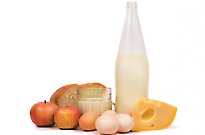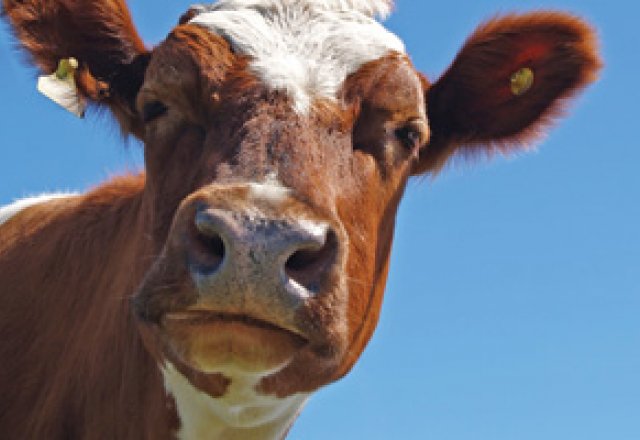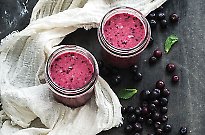
Which milk is best?

Naturopath Helen Goodwin offers her expert opinion
Is dairy milk good for us? Or, would we better off omitting it from our diets and favouring dairy alternatives for our morning muesli? Naturopath Helen Goodwin investigates
I cannot think of another food that causes as much heated conversation, in terms of it’s nutritional value, as milk. On the one hand we are told that milk is an essential source of nourishment for both adults and children alike; however, others are convinced that dairy is a killer and recommend we avoid it.
It certainly seems true for some that irritating symptoms such as acne, mucus and migraines seem to magically clear up once they take themselves off the white stuff. Others of course happily guzzle away with no apparent issues whatsoever.
Like all foods these days we are driven wild with choice and conflicting opinion. Perhaps by looking at the evolution of milk, it may become easier to understand why health problems may be an issue for some.
RAW MILK
Once upon a time if you drank milk it came straight from the small local dairy or even your own backyard. These cows grazed lavishly on fresh grass and sunshine and the milk was consumed in its fresh, raw form. Indeed this approach is still the case in many parts of the world.
Drinking milk raw in this way is considered by many health experts as the only way it should be drunk, as the beneficial bacteria lactobacillus acidophilus is still alive, as well as the vitamins, including vitamins A, C, D, B6 and B12 , minerals and enzymes responsible for helping to digest milks proteins and sugars. Raw milk is higher in calcium than other milks, due to the cow’s diet of calcium-rich grass. Many people who experience problems with regular milk will feel an improved sense of wellbeing when switching to raw products.
The issue that people are most worried about is the potential for harmful bacteria to be present in raw milk, a problem if the milk is not treated in the most hygienic manner. It’s for this reason that buying raw milk products in Australia is currently illegal. If you do choose to drink raw milk, make sure it’s organically produced. Food Standards Australia recognises the increasing demand for raw dairy and are in the process of assessing the requirements that dairies would need in order to safely produce and sell raw milk products, so things could change in the near future.
PASTEURISED MILK
When farmers decided to join together in order to produce milk on a larger scale at a cheaper price, the community dairy became obsolete. It was at this time that the pasteurisation process was introduced in order to overcome issues of dangerous pathogens. These bacteria became an issue as milk from different herds were mixed together and the health of cows deteriorated, due to over-milking and a change in the feed and housing of the animals.
Pasteurisation is essentially the rapid heating and cooling of milk as a way of destroying dangerous bacteria. Unfortunately, however, many of the goodies found in raw milk are lost as a consequence and you are left with a ‘dead’ rather than ‘living’ food.
The proteins and sugars in the milk are also altered through pasteurisation, which may be a contributing factor in some of the health-related issues already mentioned. Additional problems relating to milk drinking include digestive issues, fertility problems, heart disease and arthritis.
It is possible to reconstitute some of the lost enzyme and probiotic action of pasteurised milk by fermenting it using live cultured grains called kefir. Kefir grains are readily available via the internet and are sold here in Australia. You simply add these grains to milk and within a few days it will have fermented and the live action will be back.
HOMOGENISED MILK
The next chapter in the story of milk is that of homogenisation. When I was young the only way I would drink milk would be if it came icy cold from the fridge with the creamy top still intact. I loved that silky butterfat on my rice bubbles in the mornings.
Apparently for others this natural separation of fat and water was a disadvantage, so in the 1950s milk began to be homogenised, a process of pushing the milk at force through a tiny sieve-like apparatus, so the fat molecules split and become suspended throughout the milk.
This process also deals with a nasty side effect of pasteurisation, which is the settlement of white cells and bacteria on the bottom of the milk, which forms a thick and unpleasant layer. It also results in longer lasting milk, which is very handy for distribution and shelf life.
Every cause has an effect and the splitting of the buttermilk in this way causes an increase in oxidation of fat, which is a polite way of saying that it has become rancid. Also, these smaller molecules of fat are able to find their way more easily into the blood stream and have been targeted as a contributor to artherosclerosis and heart disease.
LOW FAT MILKS
It’s during the homogenisation process that fat can also be skimmed from the milk, resulting in low-fat or skinny milks. You may already have read my take on low-fat foods, but to remind you, we need the butterfat in milk to assist in the absorption of important vitamins such as vitamins A and D. The fat also balances the sugar content of dairy and helps you to feel satisfied.
A1/A2 Milks
Far from being a good marketing ploy, there seems to be some intriguing differences between A1 and A2 milk. A1 and A2 is a term used to describe proteins called beta-casein found in milk. Most dairy milk today contains both A1 and A2 proteins. The A2 protein is considered the original milk protein and is sourced from older breeds of cows such as the Jersey, Guernsey, Asian and African varieties. It’s believed that thousands of years ago this A2 protein mutated in certain breeds of cattle into a form that is now known as A1 beta-casein. This protein acts differently in the body to the A2, easily converting into histidines which are pre-cursers to inflammatory histamines. It’s for this and other reasons that A1 milk has been associated with dairy health issues, especially excessive mucus, upper respiratory problems, allergies, digestive and skin issues.
Although these milks still contain lactose, are pasteurised and homogenised, many people find that they are able to tolerate the A2 protein without any problems, indicating that it’s the protein rather than the lactose or manufacturing that are to blame. In fact, organic and raw milk is not necessarily sourced from A2 cows and some consumers find their intolerances disappearing on A2 sheep, goat or cows milk.
CALCIUM
I couldn’t write a column on milk without making mentioning calcium. Many people are convinced they’ll be deficient in calcium if they reduce or eliminate dairy from their diet; however, many of the world’s population consume less than half of the recommended dietary allowance and still have very strong bones and teeth.
Remember, animals such as elephants and cows live on a diet of greens once weaned and have no problem with developing strong bones and teeth. As mammals ourselves, we too can thrive, provided we include an adequate amount of dark leafy greens into our diets.
SO WHAT MILK SHOULD I CHOOSE?
We are fortunate to have a wide variety of milks to choose from in Australia with smaller dairies offering quality milk and dairy products. If you’re not willing to try the raw milk approach, then choosing full-fat, pasteurized milk that has been un-homogenised would be a good choice, preferably organic. You can then, if you wish, restore the enzyme and bacterial content by fermenting the milk with kefir grains.
You may also like to try the A2 brand of milk and if it’s not indicated on the label, feel free to contact dairies to ask if their breeds of cows produce only A2 protein. Of course, the other alternative is to milk your own. My neighbour’s son had severe reactions to cow’s milk as a child, so she bought a goat and milked it every morning for him. Now you can’t get fresher than that!
- Helen Goodwin, naturopath, www.eatingwelldaily.com.au
Get more health tips and read the latest nutrition advice. Don't forget to join the chatter on our Facebook page!


